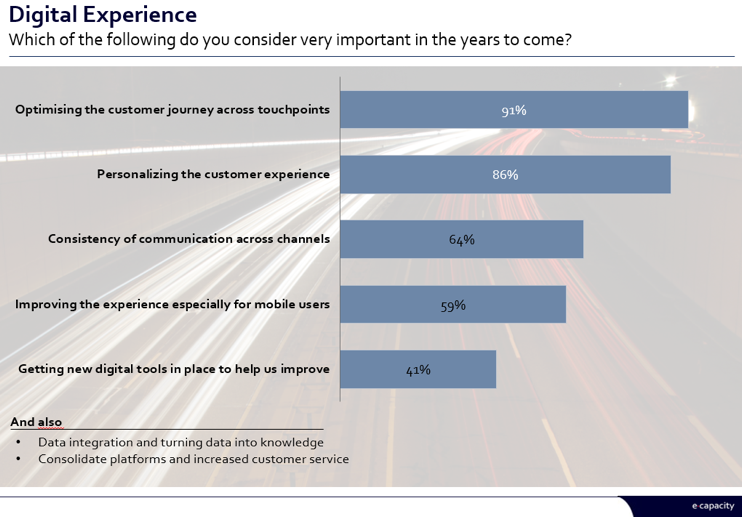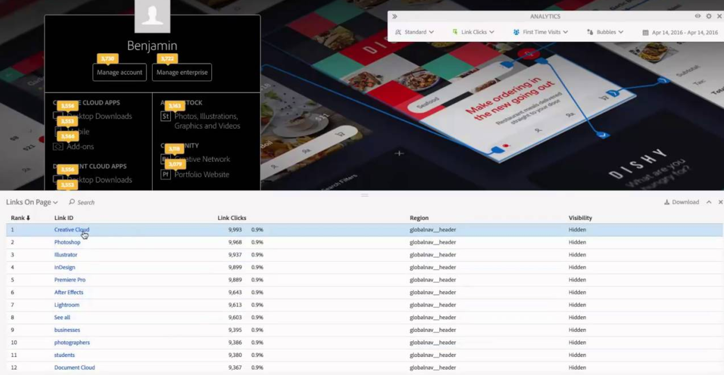Performance Optimization – where to start and which new competences are needed?
Instead of mainly focusing on launching new campaigns and building new features, many online teams are now focusing on realizing the huge opportunity and business potential within optimizing the elements that are already live on their digital channels. Many digital teams are nowadays moving from a pure focus on publishing new features/campaigns to having an optimization team that continuously focuses on data, test and improvement.
But where do you start your optimization initiatives and which type of competences are needed in the online optimization team?
The ideal performance Optimization Team consists of different roles, competences and responsibilities when compared to the traditional online team. New roles like “Optimization Manager”, “Experience Designer”, “Digital Optimization Analyst” etc. are relevant in the ideal performance Optimization Team.
In this blog post, we focus on the new roles and tasks for the web analytics person when working with Performance Optimization.
Optimization – a new focus for the web analyst
Since Analytics for optimization is about identifying specific areas with opportunities for uplift and providing insight to hypothesis and optimization ideas, the methods and ways of working for the (Digital) Analyst are different when compared to traditional web analytics tasks such as Reporting, Marketing channel performance, funnel performance and so on.
When Optimization is the main purpose, the digital analyst has to work more as a detective: the analyst must search for areas to improve and opportunities for revenue uplift. This requires both humbleness and curiosity in terms of really understanding the online customer behavior and needs, identifying barriers for the user and how to change those barriers to a better experience – it’s all about making the experience even more relevant for the customer. As a detective, the analyst may answer questions like: “What is our most valuable segment with the highest opportunity for uplift?”, “Where in the ‘hero user journey’ are the ‘critical moments’?”, in other words, areas for optimization, and, if possible, “Why is this specific segment (not) converting as expected?”.
Answering these questions requires new methods and often a combination of different tools. The analyst can’t keep being doing what he already do, he must develop new skills and accept that performing analysis for the purpose of optimization requires him to perform his work in a slightly different way.
Combination of methods and competences
The Optimization Analyst often uses a combination of different analytics methods like segmentation, customer journey analysis, funnel analysis and cart abandonment analysis.

Customer journey
The Econsultancy Optimization Report 2016 highlights the value of combining several methods like: Testing, Segmentation, Web Personalization, Cart Abandonment analysis etc. One method that is rated as valuable and very useful for identifying Optimization areas is a User Journey Analysis.
This also aligned with the latest client survey from eCapacity, where 91% of our clients indicated that optimizing the customer journey is a focus area in the upcoming year.

[eCapacity client survey 2017]
Making customer journeys analysis and finding the potential for optimization, requires very solid experience with digital analytics, but also deep knowledge about your customers and your digital channels in detail. Since there is no single report in your Analytics tool, customer journeys are made via a combination of many different analyses and methods; In Adobe Analytics, features like the new Segment Comparison (please see a specific explanation of this feature by Thomas Løjmann. Note: Article in Danish) or the new Activity Map from Adobe are examples of relevant tools, but a comprehensive and consistent customer journey needs to be composed by the analyst himself, combining various methods and technologies and sometime also various datasets.

[exampel from Adobe Activity Map]
Customer journey is a very good starting point for your optimization work since it will identify key areas that are critical for the customer making a buying decision, and it also ensures that your upcoming tests and activities will have enough traffic volume (and therefore significant data for making solid Optimization conclusions).
Rules of thumb for the analyst looking into areas of optimization:
- Remember always to have your optimization goals and metrics aligned with your overall business – ensure that your initiatives are aligned with your overall business targets!
- Working principle: Be very specific – focus on the most relevant (valuable) segments, but do also look into the numbers since you need volume (in traffic/visits) – otherwise you won’t get significant data/conclusions
- Be very specific: What is the main goal of each test? Is it new or existing customers buying product X, is it reducing drop off in check out flow or, increase soft conversion (e.g. Add to Basket) for Google Adwords traffic source?
- Create hypothesis based on user journey analysis and the areas you have identified for optimization, and use these as input for the continuous optimization together with your Optimization team
- Take your time when formulating a strategy for the individual activities before launching/activating an experiment – this will increase the insight you will get
- Don’t underestimate the effect of a structured optimization approach – a structured approach and optimization process will ensure that you always get insight from your activities (even in cases where your activity doesn’t generate an uplift). The Econsultancy Optimization report highlights a structured approach as the single most important factor in succeeding with performance optimization.
If you want to hear more about how to identify areas for performance optimization and how to get started with optimization, including assistance with the right team setup, please contact Lead Data Architect Thomas Løjmann Jørgensen or Optimization Consultant Sara Søgaard Pedersen.

